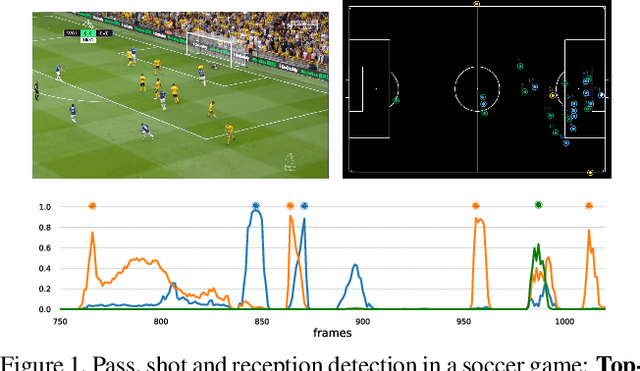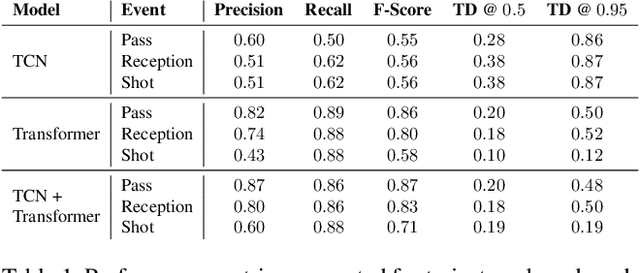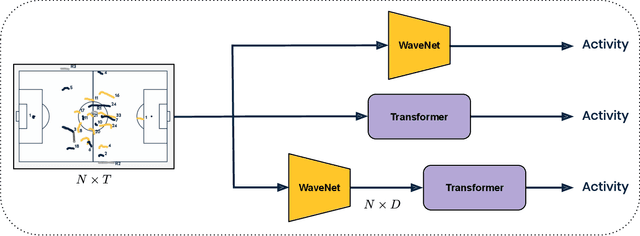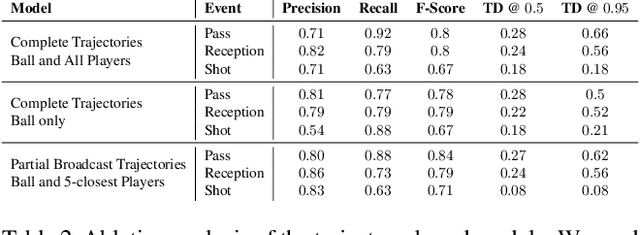Bahareh Pourbabaee
Group Activity Detection from Trajectory and Video Data in Soccer
Apr 21, 2020



Abstract:Group activity detection in soccer can be done by using either video data or player and ball trajectory data. In current soccer activity datasets, activities are labelled as atomic events without a duration. Given that the state-of-the-art activity detection methods are not well-defined for atomic actions, these methods cannot be used. In this work, we evaluated the effectiveness of activity recognition models for detecting such events, by using an intuitive non-maximum suppression process and evaluation metrics. We also considered the problem of explicitly modeling interactions between players and ball. For this, we propose self-attention models to learn and extract relevant information from a group of soccer players for activity detection from both trajectory and video data. We conducted an extensive study on the use of visual features and trajectory data for group activity detection in sports using a large scale soccer dataset provided by Sportlogiq. Our results show that most events can be detected using either vision or trajectory-based approaches with a temporal resolution of less than 0.5 seconds, and that each approach has unique challenges.
SleepNet: Automated Sleep Disorder Detection via Dense Convolutional Neural Network
Mar 11, 2019



Abstract:In this work, a dense recurrent convolutional neural network (DRCNN) was constructed to detect sleep disorders including arousal, apnea and hypopnea using available Polysomnography (PSG) measurement channels provided in the 2018 PhysioNet challenge database. Our model structure is composed of multiple dense convolutional units (DCU) followed by a bidirectional long-short term memory (LSTM) layer followed by a softmax output layer. The sleep events including sleep stages, arousal regions and multiple types of apnea and hypopnea are manually annotated by experts which enables us to train our proposed network using a multi-task learning mechanism. Three binary cross-entropy loss functions corresponding to sleep/wake, arousal presence/absence and apnea-hypopnea/normal detection tasks are summed up to generate our overall network loss function that is optimized using the Adam method. Our model performance was evaluated using two metrics: the area under the precision-recall curve (AUPRC) and the area under the receiver operating characteristic curve (AUROC). To measure our model generalization, 4-fold cross-validation was also performed. For training, our model was applied to full night recording data. Finally, the average AUPRC and AUROC values associated with the arousal detection task were 0.505 and 0.922, respectively on our testing dataset. An ensemble of four models trained on different data folds improved the AUPRC and AUROC to 0.543 and 0.931, respectively. Our proposed algorithm achieved the first place in the official stage of the 2018 PhysioNet challenge for detecting sleep arousals with AUPRC of $0.54$ on the blind testing dataset.
 Add to Chrome
Add to Chrome Add to Firefox
Add to Firefox Add to Edge
Add to Edge